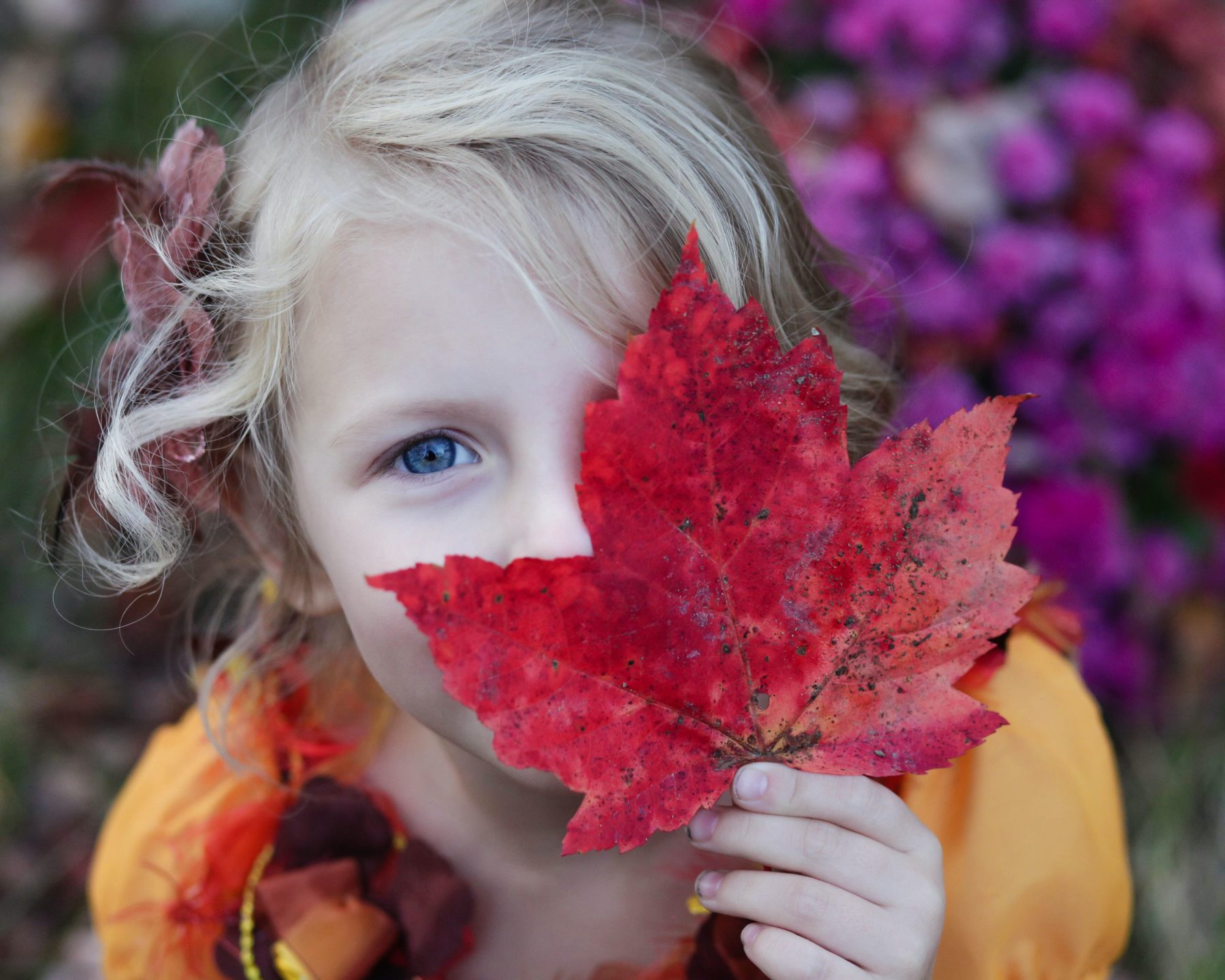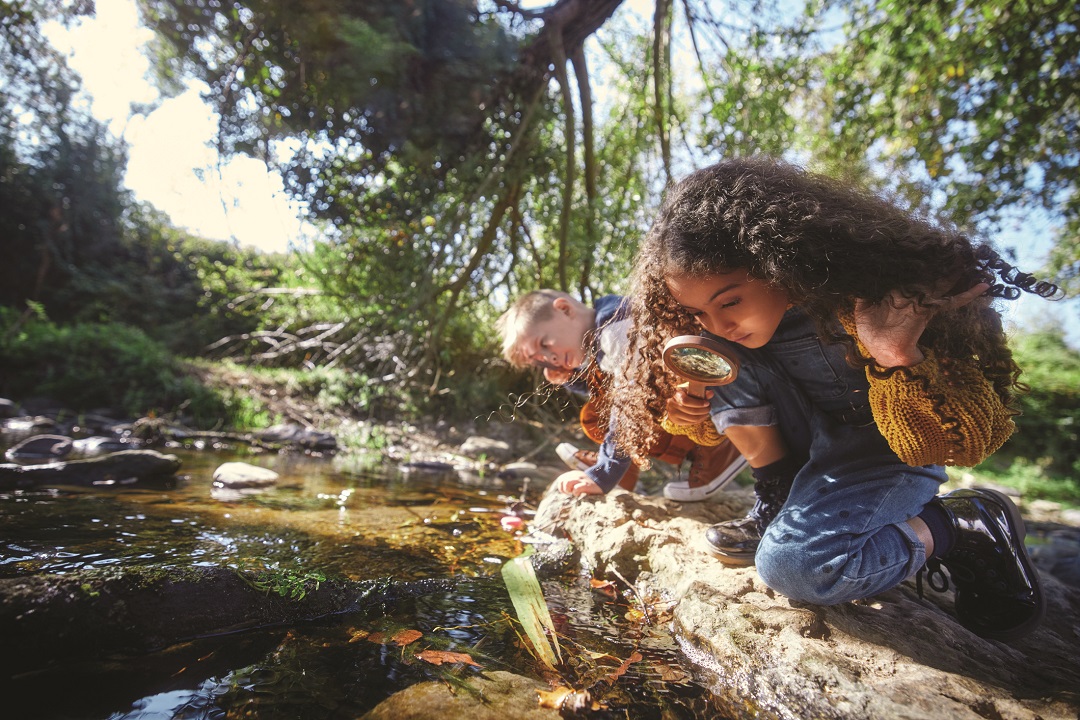A wild child loves butterflies, moss, and pebbles. He or she loves to watch bumble bees buzz from flower to flower. For them, holding a wiggly tadpole in their wet hands is a delightful act of courage.
Are you a parent who wants to raise a wild child? The good news is you don’t need a degree in ecology or geology to cultivate their curiosity and natural sense of wonder. Every family trek, be it on the water or land, is full of opportunities to help little ones — and their bigger brothers and sisters — discover all that’s amazing about nature.
Once a parent understands that naming every tree, wildflower, or bird isn’t what counts, great things can happen. In the mind of a child, what counts is experiencing nature. When parents focus on the questions that spill out of their child, magic will happen.
It may help parents to know that even the best naturalists are comfortable answering questions with “Wow, I don’t know. Maybe we can look it up.”
If you are new to the outdoors and not sure what poison ivy looks like, or what a fairy ring is, or how to take basic safety precautions, consider a visit to one of the many excellent nature centers in the region. Trained naturalists will provide a safe and fun experience for all ages. Don’t forget that zoos, aquariums, and state parks offer great programs, too.
There are a number of simple approaches parents can use to help children enjoy nature. Take a few moments before dipping your paddle in the water, stepping onto the trail, or pushing down on a pedal. Use the time to help everyone connect with the natural world. Begin with listening and then put other senses to work during your outing.

Start your sensory exploration with hearing, then move on to sight and touch.
Hearing: Challenge everyone to be as quiet as possible. Ask if anyone hears nature noises. If someone says, “buzzing insects or woodpecker,” ask them to point to where they heard it.
Sight: Ask, “How many colors can you see?” (Don’t forget the blue sky!) Avoid saying names such as, “This is a mushroom.” Play the game, “I see something tan and wrinkly growing at the bottom of a tree.” This is a fun way to introduce things. If the child is young, standing close to the object will help lead them to success.
Remember to look up. Sun dogs are little chunks of rainbow created when the sun shines through cirrus (wispy) clouds. If the sky grows cloudier, there’s a good chance of rain. Kids are great in picking out shapes in the clouds too. That’s a fun activity when cumulus (puffy cotton-ball) clouds dot the sky.
Touch: Let them touch moss. Ask, “How does it feel?” Nodding, and smiling a lot is a great reward for answers. Avoid naming things until checking them out. Then, give older kids a chance at the name.
Next, kick the game up a notch for those older ones with a simple question: “Does moss always grow on the north side of a tree, or on the shady side of a tree?” This turns kids into thinkers, into scientists. You’ll need to compare trees in an open area to those in a heavily shaded area. Finish with another question: “So, if we want to use moss as a compass, does it need to be in a shady or more sunny area?”
Smell: Flowers, leaves, soil, and the air right before and after a rain all provide easy moments of joy.
Taste: Careful here! Tasting wood sorrel, blackberries, strawberries, and other wild foods that you can POSITIVELY IDENTIFY makes for special memories. There are deadly look-alikes for wild grapes, mushrooms, and other plants. The “Peterson Guide to Edible Wild Foods” shows poisonous look-alikes on the same page as the edible plant. Leave mushrooms to the experts.
After Dark
Watching the full moon rise is cool. Stargazing is awesome. If you don’t know constellations, help your child connect the dots to create their own images in the sky. Check out dates for meteor showers. If you see a falling star, remember to make a wish! Insiders tip: Planets are so bright, they don’t twinkle.
At night, some mammals can be identified by the color of their eyeshine. If you shine a flashlight into the woods or prairie and see pink eyes shining back at you, it’s an opossum. Ask older kids to research eyeshine and make a list pairing animals to the color of their eyeshine.
On that same note, try Spider Sniffing. No, it isn’t a snipe hunt. Spiders have reflective eyes, too. Hold a bright flashlight at the end of your nose. Point it at the base of trees or into leaves. Slowly, move the beam around. When you see tiny specks of light, walk forward keeping the flashlight on them. When you are close enough, you should see the spider.
Nature experiences lead to a love for all things wild. And in the big scheme of things, that matters.
Resources
A few places to visit for new naturalists (and their newbie parents):
Powder Valley Nature Center, Kirkwood, MO
mdc.mo.gov/discover-nature/places/powder-valley-conservation-nature-center
Audubon Center at Riverlands, West Alton, MO
riverlands.audubon.org
Springfield Conservation Nature Center, Springfield, MO
mdc.mo.gov/discover-nature/places/springfield-conservation-nature-center
Watershed Nature Center, Edwardsville, IL
watershednaturecenter.org
Lincoln Memorial Garden and Nature Center, Springfield, IL
lincolnmemorialgarden.org
Author: Dr. Susan L. Barker is a contributor to Terrain Magazine.


Leave A Comment